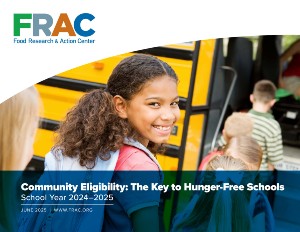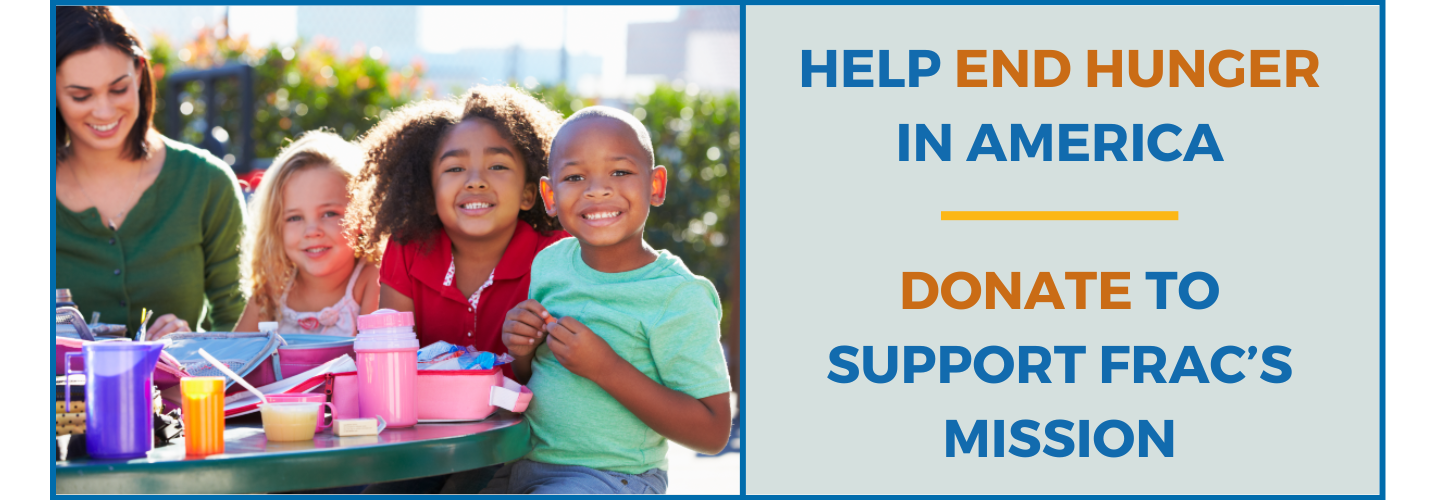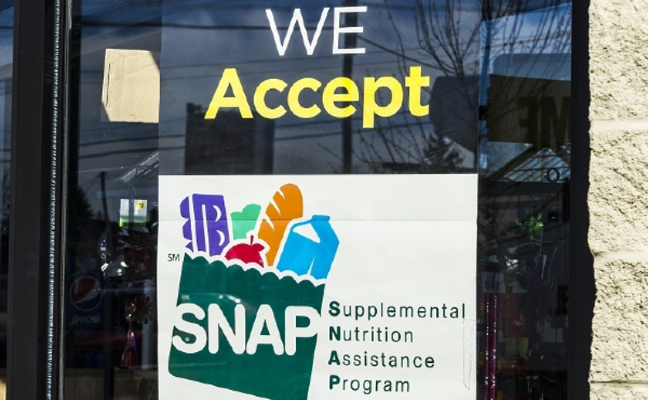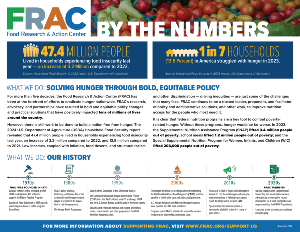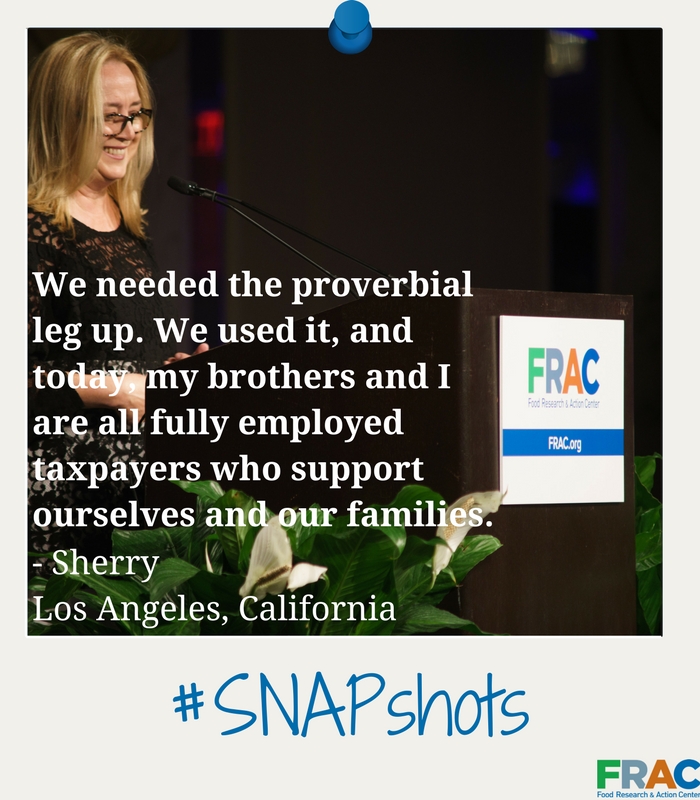
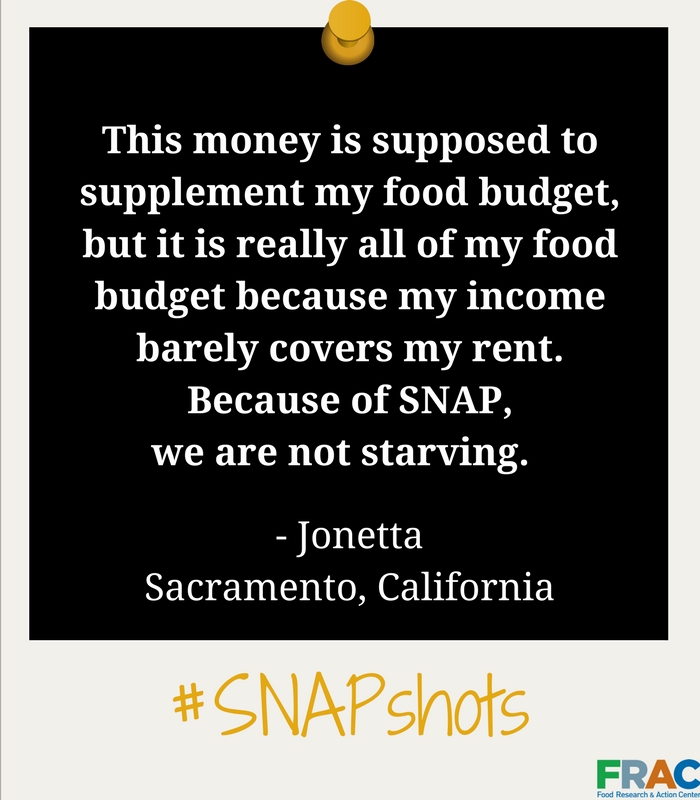
News
FRAC Chat
The Food Research & Action Center’s (FRAC) recent report, Community Eligibility: The Key to Hunger-Free Schools, highlights Community Eligibility Provision (CEP) adoption in the 2024– 2025 school year and showcases the significant growth in CEP utilization by schools and school districts around the country since becoming available nationwide over a decade ago. CEP allows high-poverty schools to offer all students breakfast and lunch at no charge regardless of household income, thus reducing stigma in the cafeteria and increasing participation in school meal programs. CEP supports students and their families, by stretching household food budgets, combatting childhood food insecurity, and supporting student health and learning. Furthermore, CEP streamlines the administration of school meal programs, reducing administrative burdens on school nutrition departments, and freeing staff time so school nutrition professionals can focus on their mission: serving students delicious and nutritious school meals.
Millions of households with low income must make difficult decisions every day when juggling the cost of many essential expenses — housing, food, utilities, child care, transportation to work, health care, and more. While costs continue to rise, income remains limited. Nearly half of households renting are cost-burdened (spending more than 30 percent of their income on rent). Households with low incomes spend about 18 percent of their income on energy, over three times the national average.
Senate Republicans have introduced a reconciliation bill that echoes the House’s approach to the Supplemental Nutrition Assistance Program (SNAP), proposing sweeping and deeply concerning cuts. While not identical, the Senate proposal poses a similarly serious threat to food assistance for millions of Americans.
Recent Publications & Data
See More Resources- Report
More schools and school districts are offering free school meals to all students through the Community Eligibility Provision (CEP), according to FRAC’s latest report, Community Eligibility: The Key to Hunger-Free Schools. This report analyzes CEP adoption—nationally and for each state and the District of Columbia—in the 2024–2025 school year.
Read the report - Report
In February 2025, the president signed an Executive Order established the Make America Healthy Again (MAHA) Commission. The Commission is tasked with investigating and addressing the root causes of America’s escalating health crisis, with an initial focus on childhood chronic diseases. Within 180 days, the Commission will use the findings from the assessment to create a strategy aimed at improving the health of America’s children.
Read the report here - Fact Sheet
The Supplemental Nutrition Assistance Program (SNAP) is the nation’s first line of defense against hunger, helping 42.6 million people in the U.S. put food on the table. As food insecurity and food prices continue increasing, protecting and strengthening SNAP is more important than ever. Discover SNAP’s impact across the U.S. in FRAC’s national SNAP fact sheet.
Discover SNAP's Impact - Fact Sheet
The federal nutrition programs are a critical support for tens of millions of households — helping them put food on the table during times of need. Investing in hunger prevention and relief also makes smart fiscal sense. Find budget and appropriations priorities for SNAP, child nutrition programs, TEFAP, older adults nutrition programs, FDPIR, and more in FRAC’s 2025 budget and appropriations leave behind for the National Anti-Hunger Policy Conference.
Download the leave behind


